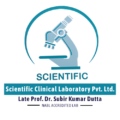Departments
Histo/Cytopathology
Overview:
Histo/Cytopathology
The Histo/Cytopathology department specializes in the examination of tissue and cell samples to diagnose a range of diseases, including cancers. Our expert pathologists use cutting-edge techniques to ensure accurate and timely diagnoses.
Histopathology examines tissue samples, while cytopathology focuses on individual cells. Both are used to diagnose diseases like cancer but differ in their approach.
Samples are typically obtained through biopsies, where a small piece of tissue is removed for examination.
Cytopathology tests are generally safe. Risks are minimal but may include minor discomfort during sample collection.
Histopathology
Histopathology examines tissue samples under a microscope to diagnose diseases, especially cancer.
- Process: Tissue samples from biopsies or surgeries are processed, sliced thin, and stained with dyes.
- Examination: Pathologists look for abnormal structures and cell arrangements to identify tumors, inflammation, and other changes.
- Diagnosis: It determines the type, grade, and stage of cancer, guiding treatment decisions like surgery or chemotherapy.
- Significance: Provides essential information for accurate diagnosis and effective treatment planning.
RT-PCR (Reverse Transcription Polymerase Chain Reaction):
Cytopathology studies diseases at the cellular level, focusing on early detection of cancer and other conditions.
- Process: Cells are collected through methods like fine-needle aspiration, Pap smears, or fluid analysis, then prepared and stained on slides.
- Examination: Cytopathologists examine cells for abnormalities in size, shape, and organization.
- Diagnosis: Helps detect precancerous conditions, infections, and malignancies early.
- Significance: Early detection allows prompt intervention, improving patient outcomes and survival rates.
